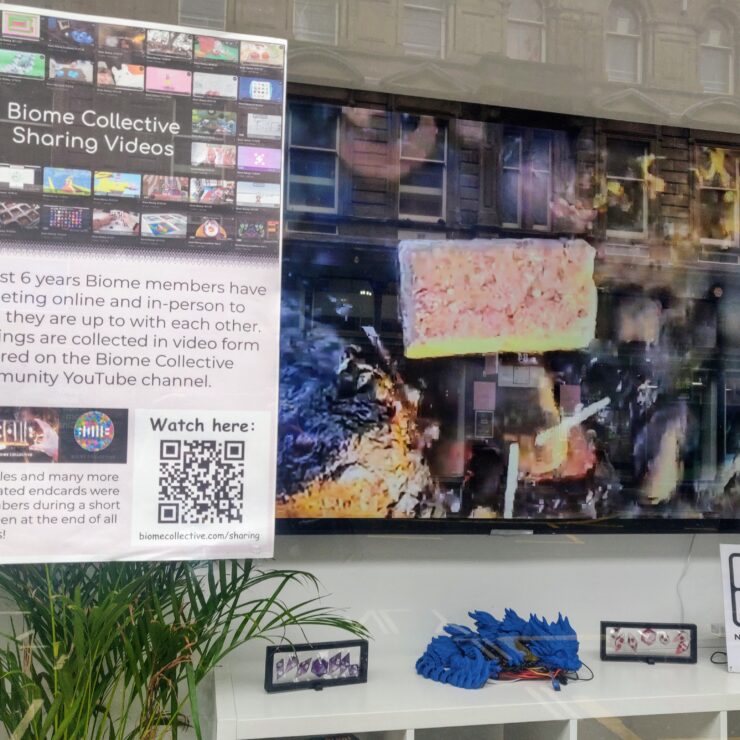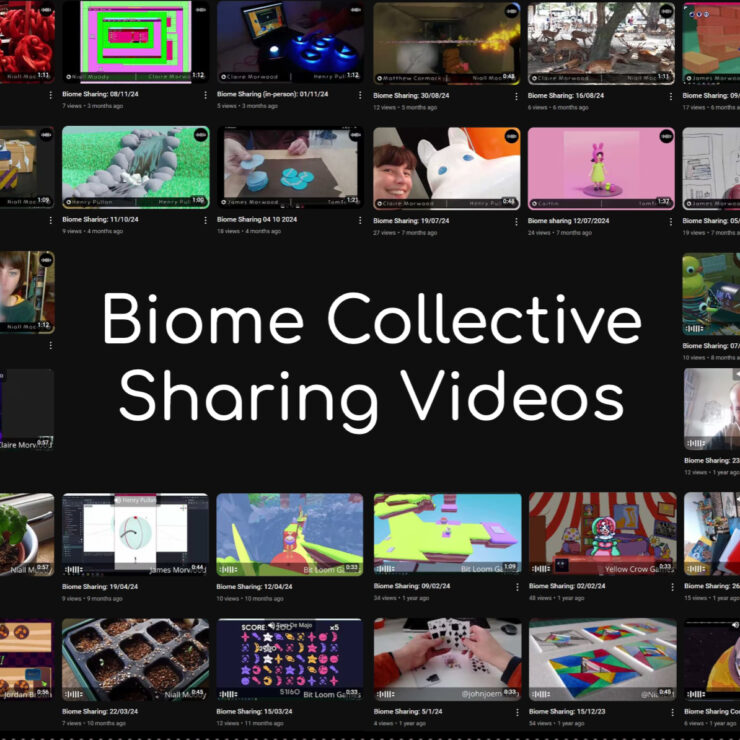Talking To Larry Achiampong & David Blandy

Larry Achiampong & David Blandy are exhibiting at this year’s NEoN digital arts festival with their show GENETIC AUTOMATA at GENERATORprojects, originally commissioned by London organisation Arts Catalyst. They talked to Ana Hine ahead of the exhibition about the the taxidermist John Edmonstone, racism in videogames, and the importance of telling the stories left out of conventional history.
What initially sparked your interest in Charles Darwin’s taxidermy teacher, John Edmonstone?
We were looking into the history of DNA and evolution, and came across the story of John Edmonstone. The story seemed to embody many of the issues we wanted to think about in our work, from the history of scientific racism, the dissemination of knowledge, to the value placed on different types of knowledge. In contemporary society racism is still a huge problem, the accelerated rise of nationalism in the Global West – for us, this project is opening up how we look at historical myth and how it still informs the present for some in dangerous ways.
Why, during the film, did you choose to focus on the imagery of a bird?
The birds in the film were all collected and taxidermied by Darwin himself, using the knowledge taught by John Edmonstone, so are the objects that illustrate the direct relationship between the two men. These specimens are from the Darwin Collection in the Natural History Museum’s archive. They are incredibly precious as historic artefacts, so we weren’t allowed to touch them- the hands you see in the film are of one of the curators at the Museum. This collection, of finches and other birds from the Galapagos Islands, have become emblematic in Darwin’s journey towards formulating the Theory of Evolution.
Is there anyone else who’s been left out of the conventional history of western science that you’d like to make work about?
We have been thinking of looking into the history of 9th Century Muslim scholar Al-Jahiz, and his Book of Animals, a book that in many ways prefigure Darwin’s theories. Also, Rosalind Franklin’s achievements have been widely acknowledged, but the fact that she was not awarded a Nobel prize for her work on the structure of DNA still grates, as does the Nobel prize being largely the preserve of old white men, something that reflects structural inequalities in society.
Do we have a responsibility to tell these stories?
It is imperative that we redress the balance of history, bringing to light the voices and stories of those whose lives have been less visible. But this is a multi-faceted problem, with single individuals often lauded for collective work, due to a historical preference for the myth of the lone genius. The voices left out most of the time are the voices of women and voices of people of colour.
As artists, we have the space to talk about anything we see fit – under that same understanding we believe it of great importance that we question issues that are pressing to our surroundings, what connects us and what separates us.
What brought the two of you together?
A shared love of hip-hop, video games, art and post-colonial thought brought us together six years ago, and we’ve been great friends and consistent collaborators ever since, while maintaining our individual practices. Our games of Streetfighter tend to be pretty intense – that’s the space where we are actually competitive!
Where did the name ‘Genetic Automata’ come from?
We were thinking about the myth of genetic determinism, of the idea that if you cloned our genes you would create an identical self, denying the impact of context and experience on our identities. We imagined making lifelike humanoid robots (Automata) whose appearance would be defined only using only the information found in our DNA tests, as Forensic Anthropologists do with the DNA of ancient bodies such as the Cheddar Man.
Why is it important to draw attention to racism, including the influence of theories like eugenics, in video games?
In the work our focus is more on bringing attention to racism through using computer games. There is obvious structural racism in many games, such as Grand Theft Auto 5 with its paltry selection of haircuts for people of colour, but Metal Gear Solid 5 is used in this work to think about the simplicity of choosing ethnicity in the virtual realm, like choosing a different suit to wear. The original Metal Gear Solid speaks of gene selection to create super-soldiers, and is interesting as an example of ideas around DNA entering into mass consciousness through popular culture. Popular opinion suggests that computer games or the virtual opens a new world of freedom – but when you look at those structures and those who maintain them (usually privileged white men), you begin to see the invisible walls and the boundaries we are confined to.
What’s next for the project?
Genetic Automata still has a lot of mileage that we would like to continue to explore. Other than that, we’re currently working on a longer project titled ‘Lament for Power’, that looks at connections between the resurgence of eugenics and disaster capitalism.
GENETIC AUTOMATA will take place at GENERATORprojects, 25/26 Mid Wynd Industrial Estate
Dundee, DD1 4JG from Monday 4 – Sunday 17 November from 12:00 – 5:00pm. It is concurrently on view at Site Gallery in Sheffield until 10 November.


